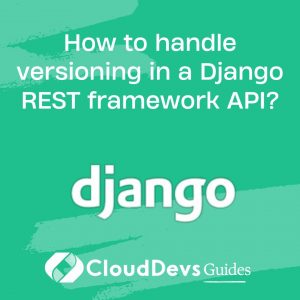How to use Django to build a content management system (CMS)?
Django is an excellent choice for building a Content Management System (CMS) due to its robust framework and built-in features that simplify the development of complex web applications. Here’s a guide on how to use Django to build a CMS:
- Project Setup:
Begin by setting up a new Django project or integrating a CMS into an existing one. You can create a project using the `django-admin startproject` command.
- Models and Database:
Define your content models using Django’s ORM. These models represent the types of content you want to manage, such as articles, images, or videos. Ensure that your models are properly structured with relationships to handle different types of content and their attributes.
- Admin Interface:
Django provides a powerful admin interface out of the box. You can customize it to allow content creators and editors to manage the content easily. Customize the admin site to match your CMS’s branding and style.
- User Authentication and Permissions:
Implement user authentication and permissions to control who can create, edit, and publish content. You can use Django’s built-in authentication system and add custom permissions to restrict access to specific actions.
- Rich Text Editing:
For managing textual content, integrate a rich text editor like CKEditor or TinyMCE. Django packages like `django-ckeditor` make it simple to incorporate such editors into your CMS.
- Media Handling:
Configure Django to handle media files such as images and videos. Use the `MEDIA_URL` and `MEDIA_ROOT` settings to specify where uploaded files are stored and served.
- URL Routing and Templates:
Create URL patterns to display different types of content and templates to render the content. Use Django’s template system to ensure consistent styling and layout.
- Version Control:
Implement version control for content changes. You can do this by creating a version history for your content models and allowing content editors to roll back to previous versions when needed.
- Search Functionality:
Incorporate search functionality to help users find content quickly. You can use Django packages like Elasticsearch or Django Haystack to implement robust search capabilities.
- Security and Permissions:
Ensure that your CMS is secure by implementing proper security practices such as input validation, escaping user-generated content, and preventing common security vulnerabilities like Cross-Site Scripting (XSS) and Cross-Site Request Forgery (CSRF).
- Testing and Quality Assurance:
Thoroughly test your CMS to ensure its reliability and performance. Implement automated tests to catch and prevent regressions as you add new features.
- Deployment:
Deploy your Django CMS on a production server using a hosting provider or your infrastructure. Configure your web server (e.g., Nginx or Apache) and database server (e.g., PostgreSQL or MySQL) for optimal performance.
By following these steps and leveraging Django’s robust features, you can build a powerful and customizable Content Management System tailored to your specific requirements. Django’s flexibility and scalability make it an ideal choice for developing feature-rich CMS solutions.






